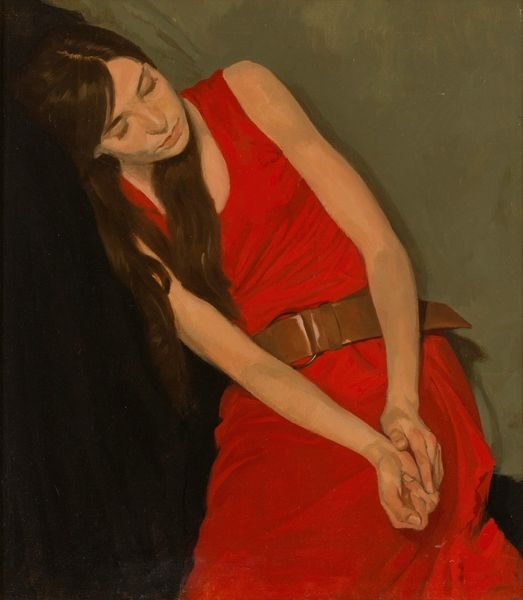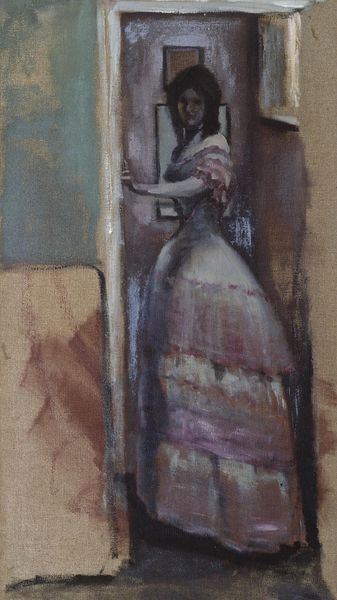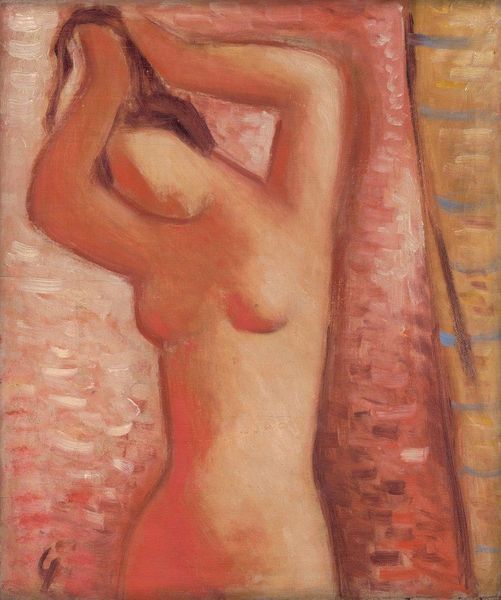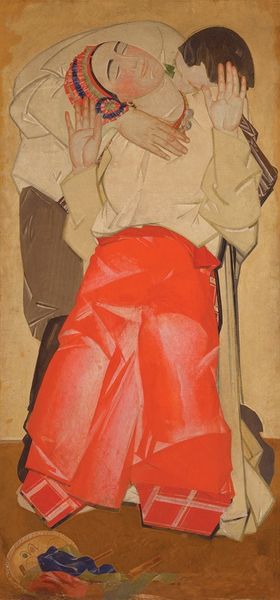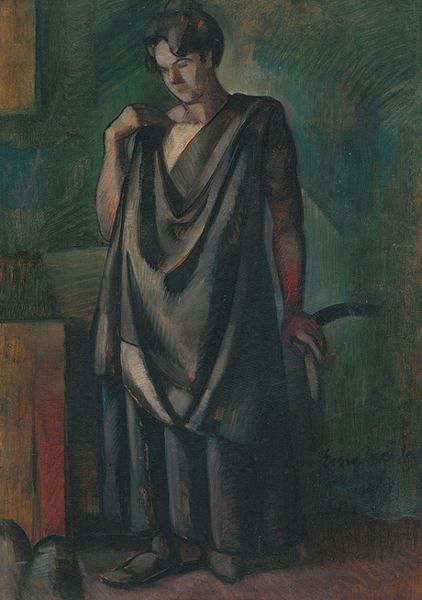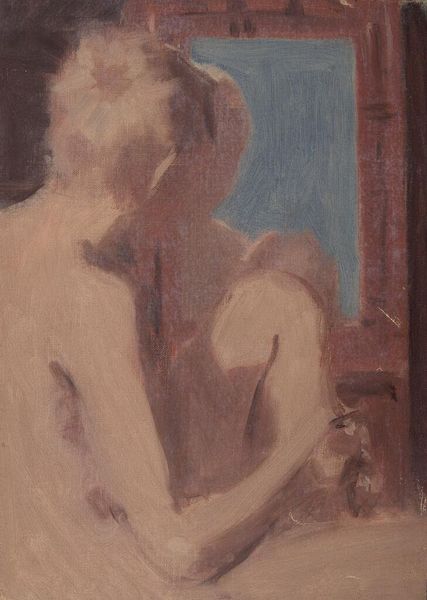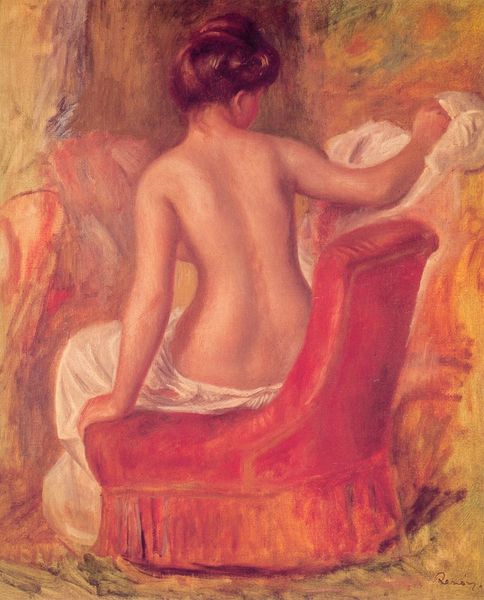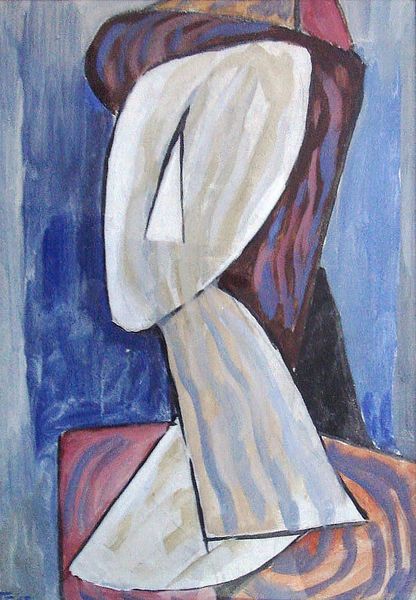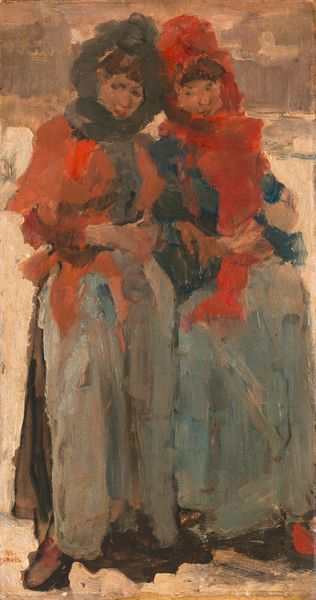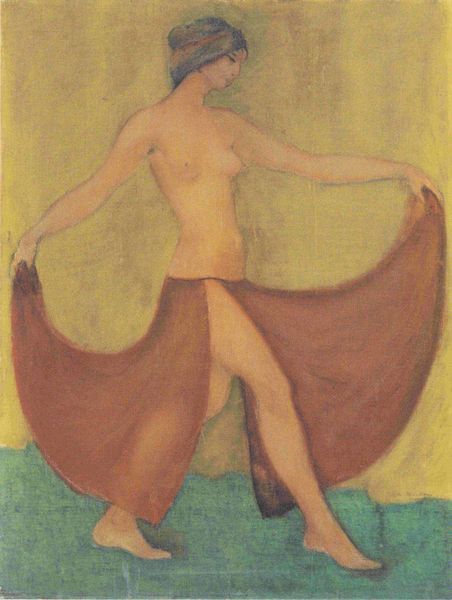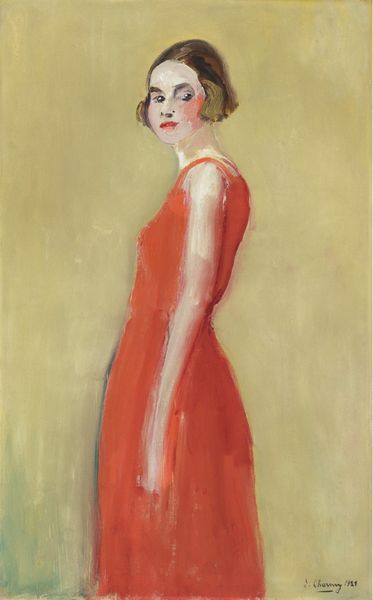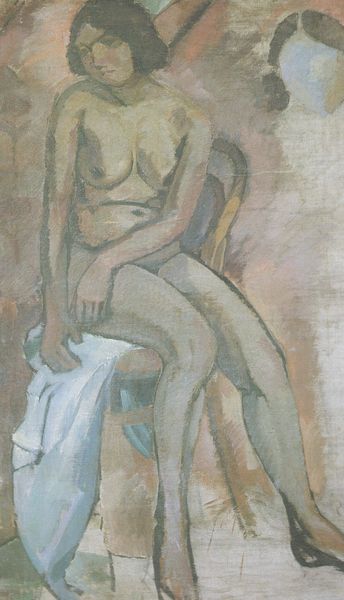
painting, oil-paint
#
portrait
#
painting
#
oil-paint
#
figuration
#
expressionism
#
modernism
Dimensions: 120.0 x 43.0 cm
Copyright: Public Domain
Editor: This is Max Beckmann’s "Portrait of Käthe von Porada" from 1924, an oil painting now hanging at the Städel Museum. It’s quite striking, but I can't help but notice an odd dissonance between the bright colors of the dress and her seemingly somber mood. What catches your eye in this piece? Curator: Immediately, I observe the distortion of form, especially the elongated proportions of the figure, which diverge from strict naturalism. Notice also how Beckmann uses color not descriptively, but rather for its inherent expressive potential. Editor: So, it's less about capturing a likeness and more about... what? Curator: The composition creates a sense of unease through asymmetry. Consider the relationship between the subject's figure and the flat plane that serves as background. There’s an underlying tension created through contrasting colors in the chair against the red dress. How do the forms contribute to this emotional climate? Editor: I see it. The angular chair juxtaposed with her softened facial features creates an interesting dichotomy, and I wonder about that shape in the back, almost like an unfinished halo behind the subject's head. It lends to that tension. Curator: Precisely. Beckmann is not simply representing a person, but rather engaging in an exploration of the inner self through formal means. Editor: So the painting's effect emerges from the contrast and tension in shapes and colors rather than just the sitter's pose? Curator: Precisely. By examining elements like line, color, and spatial relationships, we understand its essence. This allows a fresh perspective on understanding Modernism's visual syntax. Editor: That’s fascinating, viewing art this way emphasizes how elements interplay to stir something beyond what's depicted on the canvas. Curator: Yes. Art operates in the realm of pure forms and visual relationships, regardless of external references or the subject it contains.
Comments
stadelmuseum almost 2 years ago
⋮
The delicate dress, the elongated limbs and the mirror reminiscent of a halo emphasise the fashion journalist Käthe von Porada’s (1891–1985) elegant appearance. She lived in Frankfurt from 1924 on and was one of Max Beckmann’s closest friends. In 1928, she went to Paris as a correspondent for the “Frankfurter Zeitung”, from where she supported Beckmann immensely. She bought several of his works, helped him with an exhibition and his move into exile in Amsterdam. Beckmann repeatedly used such slender vertical formats for portraits of the ladies of Frankfurt in the early 1920s.
Join the conversation
Join millions of artists and users on Artera today and experience the ultimate creative platform.
